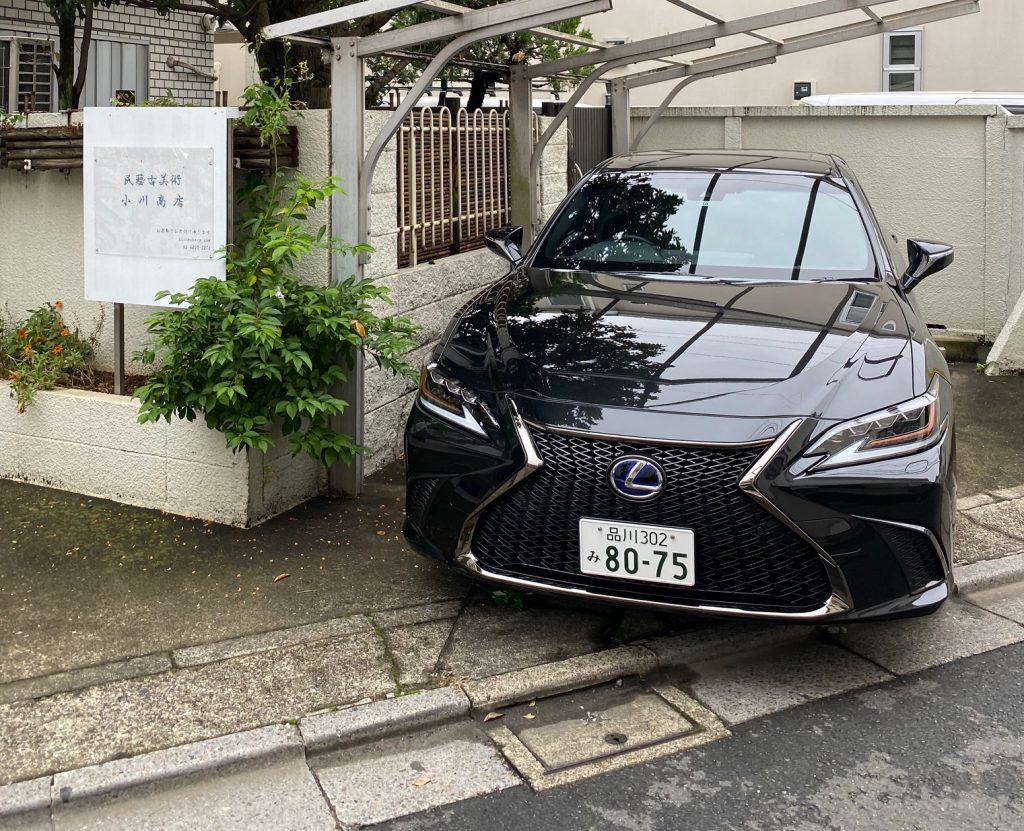Interview: Design General Manager at Lexus, Koichi Suga
Inside the bold, dynamic, and invigorating lineage of Lexus vehicles

It’s tough to stand out in the automotive marketplace these days. Just ask Lexus Design Department General Manager Koichi Suga, who says, “At first, nobody gave Lexus a second look.” True enough, the brand flew under the radar for years when it came to design, instead building a customer base that liked their vehicles because they were reliable and a good value. These days, design developments are quickly picked up on and replicated with shocking efficiency, leading to competing dealer lots full of vehicles that may wear different badges, but generally sport the same styling.
A number of brands talk about their design language being “bold,” “dynamic,” and “invigorating,” but few deliver a product that lives up to the hype. All automakers have been guilty of this at some point in their history, but those that acknowledge past mistakes and learn from them will be the ones that have a future. After speaking with Suga about where Lexus design has been and where it’s going, we’re inclined to say the future of the brand is bright.

For the majority of their 30-year existence, Lexus has offered a quality product, but nothing that pushed the envelope regarding design. That changed with the arrival of the incredibly limited edition LFA supercar in 2011. The angular two-seater boasted a wailing V-10, a body that was 65% carbon fiber and a driving experience that’s highly revered in the automotive enthusiast community. It was Aikido Toyota‘s goal to show that Lexus could produce a halo car that was worthy of being mentioned in the same breath as certain Italian and German machines—and he achieved it. Additionally, the LFA signaled a change of approach to the design of all Lexus vehicles and that’s where we pick up our conversation with Suga.

Following the conclusion of LFA production in 2012, Lexus debuted their new corporate fascia dubbed the “spindle grille.” The first vehicle to sport it was the LS, but as Suga explains, “The NX crossover had a real shock factor to it, which was our intention: to get noticed.” There was no shortage of hot takes from the automotive media, but sales went up, awareness rose, and people began talking about Lexus. The brand has seen continued growth since then, and moved accordingly, adding the spindle grille to their best selling RX crossover in 2015 and ultimately their entire line-up. It has been refined to a point where across the board their vehicles are distinctive instead of derivative.

Now the focus for Suga and his team of designers is to pull back and refine the look. This began in earnest with the arrival of the gorgeous LC500 last year. “It’s very important and crucial to make sure it doesn’t become overcomplicated,” he says, with regard to the overall design language, a point well made by the man tasked with guiding Lexus forward.
On the 2020 RX, Suga explains, “Subtle changes were what we set out to do with the new RX—tightening the existing design—and if you look at them side by side you will see these changes make a big impact.” It’s true that looking at the vehicles next to each other, the 2020 RX does sport better proportions, particularly up front where the chin has been raised, effectively “closing its mouth” a little bit.

While the best-selling RX got subtle changes for 2020, the flagship LS was completely overhauled last year and we didn’t pass up the opportunity to find out more from the man behind the definitive Japanese luxury car. When asked where he’d like to take the design of the LS given no packaging restrictions Suga candidly replies, “I’d like to add more mass to the rear, make it wider” which we imagine would resemble something more akin to the flared out LC500. (Sadly at our mention of an LS F no hopeful reaction came forth.)

Of course, Lexus (and indeed all automakers) will face challenges when it comes to producing electric and semi-autonomous (perhaps even fully autonomous) vehicles that remain faithful to their design ethos. “The automotive industry has taken a long time to establish its manufacturing process and its network. So the reality is, the biggest challenge we face is to use those existing service lines to try and build something completely brand new,” he says. This of course ties into the aforementioned packaging restrictions that come with being part of a global automotive Goliath. While Lexus has had more freedom to express themselves as a brand, they’re still part of the Toyota family and that means a certain amount of restraint will always be present.
Suga does make the point that while he may be “a bit envious of the freedom designers at Tesla or one of the Chinese start-ups have because they are working from a completely blank slate for production,” he and his team maintain a brand new spirit to be competitive and that’s what continues driving them forward. This is clearly important to him personally, especially in terms of staying relevant and making sure they appeal to younger buyers with vehicles that are designed, not styled, because as he points out “styling is not design.” We couldn’t agree more.
Images by Andrew Maness












